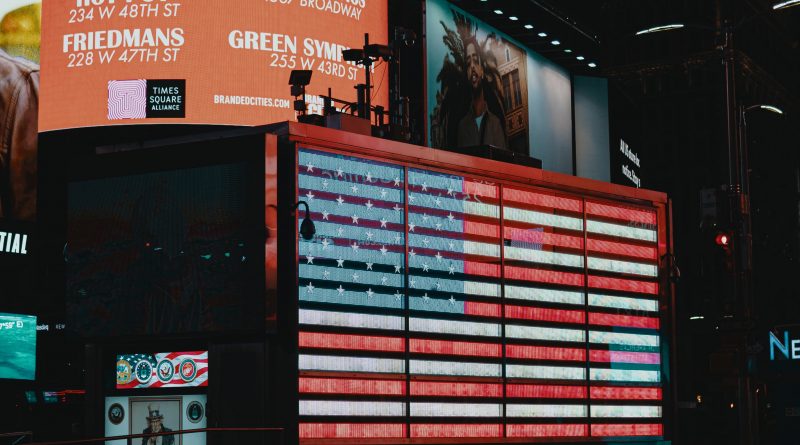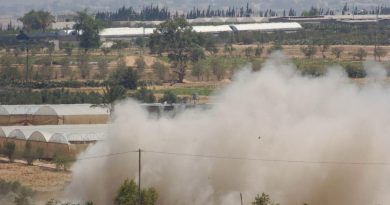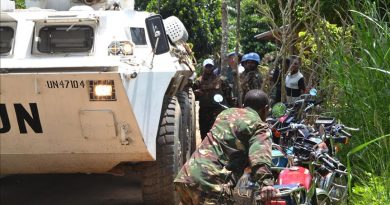Government Interventions, Public Health Responses, and the Economics of Pandemics
Ali H. Aljarrah
Staff Writer
As the world hits over a million total confirmed cases of COVID-19, the world economy remains in a comatose state due to government mitigation policies designed to slow the infection rate of the virus, reports Johns Hopkins’ Coronavirus Resource Center. In a March 27 interview with CNBC, International Monetary Fund Managing Director Kristalina Georgieva announced the global economy entered a recession due to COVID-19. A previous Morgan Stanley report predicted a “deeper recession, but not depression” in 2020, placing global growth estimates at 0.3 percent.
COVID-19 is the first pandemic to wreak havoc on the global economic system in recent memory, but it is not the first in history. The 1918 H1N1 “Spanish flu” pandemic was the last virus to cause a major interruption to the international economy. A March 2020 Federal Reserve study found that areas affected by Spanish flu in the United States saw a “sharp and persistent decline in real economic activity,” similar to economic trends caused by COVID-19.
The study concludes that areas where local governments implemented Non-Pharmaceutical Invention (NPI) policies like school closures, public gathering cancellations, and quarantines earlier in the year experience quicker economic recovery compared to areas that do not immediately intervene. For example, because Oakland implemented NPIs early in the year, the California city saw lower mortality rates and experienced a strong and quick economic recovery. Meanwhile, Philadelphia continued to hold major public gatherings, subsequently experiencing higher mortality rates and a slower recovery of city-level employment, manufacturing output, and holdings of national bank assets. The study corroborates Brookings Institute findings, which state that while governments across the world overwhelmingly responded to the COVID-19 outbreak with NPI implementation, results differ based on response times. Within the first three weeks after the outbreak in China, the countries of Japan, South Korea, and the United States confirmed their first cases of COVID-19. However, South Korea and Japan saw lower infection rates compared to the United States, which began NPI implementation much later than the east Asian countries.
Governments taking measures to minimize interaction simultaneously rush to prevent a depression-level economic crisis. Unfortunately, the reality of a globalized, economically interdependent world means the NPI implementation is not always feasible, especially in developing countries. The Council on Foreign Relations estimates the total price tag of COVID-19 to be $10 trillion globally, a price that developing countries have not historically been able to pay. The 2002 SARS outbreak in China resulted in the loss of some $80 billion due to medical expenses, travel and tourism restrictions, loss in consumer confidence, and loss in investments, according to a U.S. Institute of Medicine study. Likewise, the 2014-2015 West African Ebola crisis heavily impacted international prices for bauxite, iron ore, and gold, losing 30-60 percent of overall value while hurting GDP growth and ultimately costing the region approximately $2.8 billion, according to the World Bank.
The future of the world economy is dependent on the duration and death toll of the virus, with both in direct correlation with public health response. The U.S. stock market reciprocated anxieties surrounding outbreak duration and response in March, anticipating a slowdown in economic growth. The S&P 500 index lost almost half its value when it bottomed on March 23. The Dow Jones Industrial Average lost 40 percent of its value on the same day, while U.S. unemployment skyrocketed to 13 percent.
Given the volatile stock market, the Federal Reserve indicated that they “will do anything within its power” to aid the economy while Congress passed a $2 trillion stimulus package to provide economic support. A CNBC analysis asserts the brief economic rebound was a direct result of Congress’s relief package and an improving outlook on the outbreak, many fear that the market might crash again.
In Asia, the Chinese stock market slowly recovers from COVID-19-related falls while economists expect the country to have a slow growth this year. China’s central bank announced that they will reduce reserve requirements to help prop up businesses. Meanwhile, Japan’s Prime Minister Shinzo Abe promises an ‘unprecedented’ stimulus package for cash payments, interest-free loans, and other programs designed to stimulate the shrinking economy suffering from a drop export demand, a direct result of the virus outbreak.
Europe is also taking similar action. The New York Times reports the EU backed a half-trillion euro stimulus package to protect their economies. Germany’s government is also allocating 350 billion euros to bail out businesses, and the Bank of England is lowering interest rates and spending 400 billion euros to protect workers’ pay.
In the last 100 years, the world has not experienced a pandemic that ravaged and disrupted life more than COVID-19. Given lessons learned from the 1918 Spanish flu pandemic, governments must intervene to implement and enforce NPIs in order to minimize illnesses deaths. Global economies will not begin to recover until governments contain and minimize the virus. States now face the difficult challenge of stabilizing their economy while also supporting their people, a task that could result, if not done correctly, at an even higher cost.



